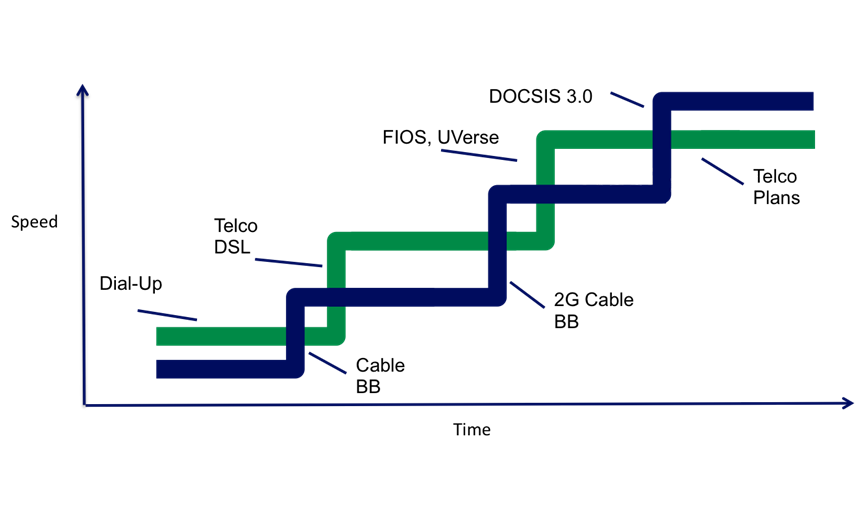You might argue that major cycles of investment in communications networks happen when the investment climate and government policy line up. Historically, that was the reason for grants of monopoly or scarcity of spectrum availability.
But you might also argue that “supply” innovations now are matched, in an Internet era, by efforts to change the demand drivers.
Google Fiber is trying to do a bit of both supply and demand innovation. It always has been unlikely that Google Fiber would discover some disruptive new cost advantage related to network construction costs.
Some argue that municipal inducements are important, but a reasonable observer might argue that has only minor impact on network costs. As always, “digging holes and hanging cable” is where most of the cost lies.
Nor does it seem Google has found any breakthrough in consumer premises equipment costs. A consumer buying broadband access, video and DVR service requires three boxes, plus a tablet, for example.
But Google is trying to change the breakeven point for operating costs, applying something that is analogous to an “Internet” model for marketing and customer support, for example. In essence, Google Fiber is an attempt to illustrate that a major ISP could operate at far lower costs than traditionally has been thought possible.
More importantly, Google Fiber is an attempt to influence demand drivers, by creating new applications and behaviors built on the assumption of ubiquitous gigabit access.
In that same way, the Federal Communications Commission wants to encourage creation of gigabit cities in every U.S. state, by 2015. That goal is unlikely to be reached, as even if construction started right away, full new networks could not be built within two years.
In truth, the FCC’s goal is better described as “gigabit communities,” built around “anchor institutions,” not full “cities.” The general idea is that doing so is the best way to foster the creation of new applications that presume ubiquitous gigabit communications.
Blair Levin, Gig.U executive director, points out that changes in regulatory policy historically have lead to changes in market dynamics, by changing the investment climate and business model in a positive direction.
The idea is that more investment happens when capital or operating expenses are lowered, when the riskiness of investment is reduced or when revenue opportunities are enhanced.
Changes in regulatory policy also can change the business case by altering the threat of competitive losses for existing contestants, forcing them to invest in response.
The whole point of Google Fiber, the “Gigabit Cities” initiative and Gig.U are to try and change the math in a positive direction (lower cost, higher revenue) while changing the competitive climate (force incumbents to invest faster)
Are telcos playing “catch up” in the race to keep providing better high speed Internet access? More generally, with the exception of what might be done by fiber to home networks, are other contestants able to keep up with cable?
You might well argue that most contenders are not physically able to keep pace, the exception being a fiber network, such as operated by Google Fiber in Kansas City, Mo. and Kansas City, Kan.
For some contestants, the issue is capital. For others the key blockage is spectrum, and in some cases it is network architecture.

Sector
|
Ecosystem change
|
CapEx
|
OpEx
|
Risk
|
Revenue
|
Competitive Losses
|
Telco
|
Grant of monopoly
|
|
|
Lower
|
Raise
|
|
Cable
|
Grant of monopoly, pole attachment law, compulsory broadcast license
|
|
|
Lower
|
Raise
|
|
Rural areas
|
USF
|
Lower
|
Lower
|
|
|
|
Wireless
|
Limited # of licenses
|
|
|
Lower
|
|
|
DBS
|
Limited # of licenses, program access
|
|
|
Lower
|
Raise
|
|
Broadband upgrade
|
Deregulation, two wire policy
|
|
|
|
Raise
|
Raise
|
Wireless upgrade
|
More licenses, lowered TAC, oversight of siting authority
|
|
Lower
|
|
Raise
|
Raise
|
Broadcast television to digital
|
Provide 2nd channel for transmission of content
|
Lower
|
|
Lower
|
Raise
|
|

